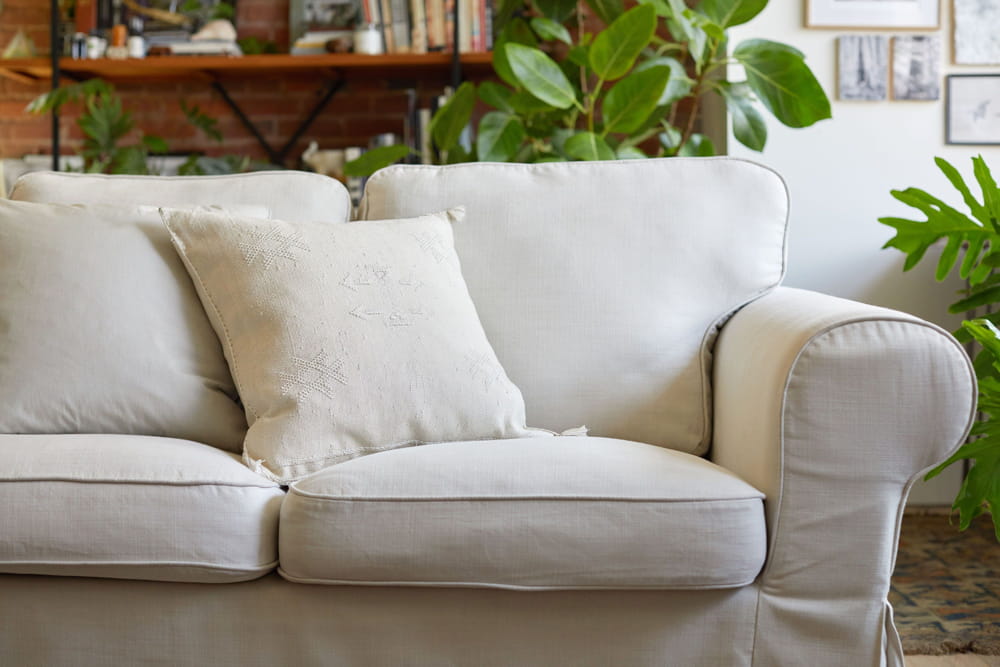
Cushions are the soft, supportive pads that fit inside a sofa. These cushions are typically made of foam or down feathers and can be stuffed with cotton batting, polyester fiberfill, or other materials.
The first step to restuffing your sofa cushions is to remove them from the sofa. You will then need to turn the cushion over so that you can see how it is sewn together. If you notice any zippers or buttons on the cushion, unzip them and then remove any stuffing from inside of the cushion. Once you have removed all of the old stuffing from inside of the cushion, it is time to replace it with new stuffing material.
How much does it cost to Restuff couch cushions?
Couch Restuffing Cost It costs about $200 to $300 to restuff a couch, depending on the type of foam or padding used for the job. Restuffing a couch may be required over time if the fabric wears down.[1]
How do you fix a flattened couch cushion?
Flattened cushions can possibly be revived using the same materials by turning them around. But the most effective fix is to rebuild the cushions with new foam and with polyester or Dacron wrap around the foam.[2]
What is the best filling for sofa seat cushions?
Foam & Fibre Foam wrapped in a layer of fibre (SupaWrap) is the most recommended seat cushion filling as it provides the support of foam and the softness of fibre, it is also cheaper than feather wrap.[3]
Can I replace the foam in my couch cushions?
The foam inside sofa cushions can be easily replaced. When your sofa cushions get saggy or lumpy, but the fabric and frame are still in good shape, replacement cushions can give your sofa new life.[4]
How do you put foam on couch cushions?
Remove the Cushion. Remove the cushion from the couch. Lay Out Your Fiberfill. Spread a sheet of fiberfill on a flat surface. Pin the Fiberfill. Cut the Fiberfill. Use Spray Adhesive. Wrap the Foam in Fiberfill. Fit the Foam Inside the Cover. Zip the Cushion Closed.[5]
Why do sofa cushions go flat?
Related Articles. Like many things in life, age can cause couch cushions to sag and flatten. They do not rebound and make getting up from the couch difficult. Nothing dates your couch quicker than tired, flat cushions.[6]
Which cushion filler is best?
The 3 most common sofa fillings are: Feather – as the softest sofa filling, feather is a popular choice for those who like to sink into their sofas. Duck feathers are typically used for sofa cushions while down is mainly used in decorative scatter cushions.[7]
How long do foam cushions last?
Consumer Reports magazine recommends replacing your new original foam cushions in the first 3 to 5 years. This may be a shock to many people but you should know that most OEM foam is a plastic-based polyurethane foam that starts to soften after the first 6 months of use.[8]
Which density foam is best for sofa?
Summary: High Resilience foam at 2.8 – 3.0 lb. per cubic ft. is the best foam to use for cushions. It is highly responsive for a quick return action and will provide an extra bounce. When it comes to the best foam for sofa cushions, High Resilience foam claims the title.[9]
What type of foam is used in sofa cushions?
Polyurethane foam is the most common type of foam fill for sofas, and is also often used as “toppers” for mattresses.[10]
How do I make my cushions fluffy again?
Fluff Your Pillow By Hand. Grab your pillow and place it on your lap. Massage Your Pillow. Fluff Your Pillow In The Dryer. Increase Fluffiness With A Tennis Ball In A Sock. Fluff Your Pillow Outside.[11]
Should cushion inserts be bigger than cover?
Expert tip: always choose a cushion pad that’s the same size or one size bigger than your cushion cover to ensure extra plumpness and comfort. Never go for a cushion pad smaller than your cover as you’ll end up with empty corners where there’s no filling – overstuffed looks and feels much better.[12]
